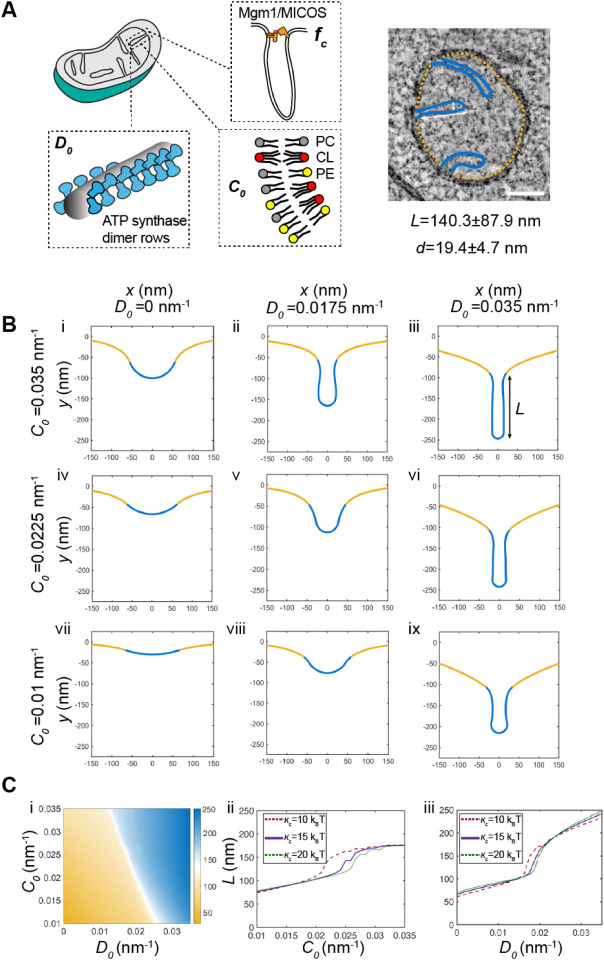Figure 5:
Continuum modeling of CM tubule formation reveals a snapthrough instability mediated by both lipid and ATP synthase generated curvatures.
(A) Schematic depiction of yeast CM tubules containing a modeled neck force (fc) induced by Mgm1p and MICOS complexes, a deviatoric curvature imposed by ATP synthase at tubule ridges (D0), and a spontaneous curvature along the entire membrane imposed by asymmetric distribution of CL across the IMM (C0). (Right) TEM image showing typical yeast CM tubules in a single mitochondrion. Scale bars, 100 nm. The average tubule length (140.3±87.9nm) and diameter (19.4±4.7nm) of 15 cristae tubules were analyzed from tomograms of n=3 SFA2 mitochondria.
(B) Changes in deviatory and spontaneous curvatures modulates tubule morphology. Panels i-ix show shapes of the membranes from simulations of the continuum model. For these simulations, the bending modulus of the membrane was maintained at 15 kB T and the tension was set at 0.01 pN/nm. The total membrane area was set to 5.65 × 105 nm2 and the coated area was 1.413 × 104 nm2 The values of C0 and D0 were varied as shown and fc was set to 8 pN/nm at the base of the coat.
(C) CM tubule formation shows a snap-through behavior. (i) Length of the tube as a function of C0 and D0 for the same values of bending modulus, tension, and areas as shown in (B). The white region shows the transition from the short to the long tube. The color bar shows the length of the tube in nm. Line graphs in (ii) show the length of the tube as a function of C0 for D0 fixed at 0.0175 nm−1 and line graphs in (iii) show the length of the tube as a function of D0 for C0 fixed at 0.0225 nm−1 for three different values of к. In both these graphs, the abrupt change in length is indicative of a snapthrough instability.

